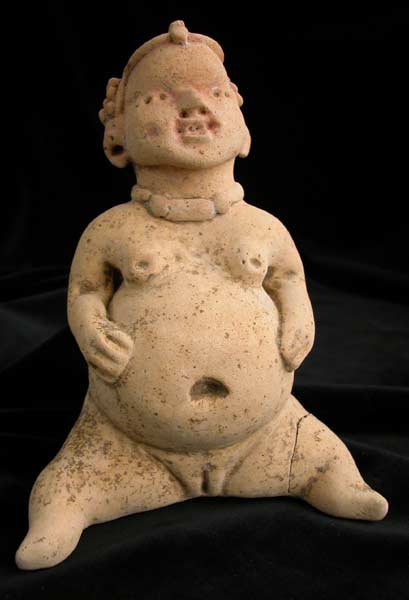Mayan Seated Fertility Sculpture, 300 CE - 900 CE
Terracotta
7
PF.6093
Further images
Fertility figures are among the oldest sculptures known to man. Primordial, instinctive, such works speak to us in an ancient language. They represent man’s awareness, the human comprehension of the...
Fertility figures are among the oldest sculptures known to man. Primordial, instinctive, such works speak to us in an ancient language. They represent man’s awareness, the human comprehension of the life cycle and the struggle for sustenance and survival. They represent the female ideal: swollen breasts, protruding belly, and prominent hip. Such features are symbols of fecundity and motherhood. Early mankind realized that fertility was the difference between our reproduction and ultimate extinction. Fertility sculptures are a calm to our fear, they are prayers to gods for continuation. This charming sculpture depicts a woman with a round, swelling stomach. Both her arms rest along the sides of her belly that features a recessed navel. Her hair appears to be braided and she wears a beaded necklace, presumably made of jade, that both suggest she was a member of the Mayan elite. Her legs are spread open and her genitalia is prominently displayed, reiterating the source of her fecundity. This sculpture represents the ideal woman, a pregnant mother-to-be who, through her powers, will ensure the survival of the people and thus, the continuation of Mayan civilization.







